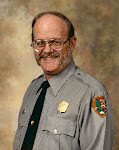








An Autobiography in Photographs












An acquaintance from my days in
"Tom,What a nice blog. Well done. I really like your pictures. You can always tell when someone is well
versed in composition. I know from experience that the prints are going to show much more texture
and detail than what we see on our monitors. I am a rabid B&W fan and thought your Carlsbad pictures
were real stand-outs; but your high contrast skies, especially in Yosemite are proof of your color skills.
Which pictures do you think are your best? (It’s a question that separates your journey from your
accomplishment, and I am always curious to know how people see themselves.)Jerry" Since I only give a brief description in my profile, I thought I’d do a more extensive autobiography of my photographic background and experience. The very first pictures I ever took were in Yosemite Valley in 1948 at the age of 11. I was using a Kodak Brownie box camera. My real journey into photography occurred while I was in high school when my girlfriend’s father was a professional photographer. He worked for large billboard company in San Francisco, but a couple of times a year, he took “school pictures” (pictures of the entire class rather than individual portraits), which he developed and printed in his home darkroom (black and white, of course). On the weekends, I would work with him as he did all the developing and printing. I learned a lot, and this experience started me on my lifelong passion in photography.
My cameras during high school, and throughout college as well, were an Exakta 35mm camera, and a 2 1/4” square twin-lens reflex cameras patterned after the German Rolleiflex (mine was made in
Back to photography. As mentioned in my profile, I had college photography classes with Jack Welpott as well as John Gutmann, and I became thoroughly grounded in the West Coast School of Photography with Ansel Adams and Edward Weston as two of the guiding lights. In one of the classes, we even visited Adams at his home in
Both of my professors stressed composition, and we spent a great deal of time critiquing famous photographs, paintings, and each other class work. When I break a composition rule, I’m well aware of what I’m doing and why I’m doing it. Black and white images vs. color images can provide quite an discussion. Some of my best color photographs would also make excellent black and white prints while others depend on the colors within to support their composition and strength. I always like something Cole Weston said in defending his taking color photographs – Well, we see in color, don’t we? (or words to that effect). As with any photographer, the more pictures you take, the better the work becomes. It is not only technically better, but the person is able to see photographs all around them even in some mundane situations. Many people, including myself, develop “a style” in their work as they mature. My style will become more evident my blog as I start showing my later photographs
In my second year of college that I got a summer job in
In the mid-1960’s, some mail-in labs appeared that would process and print black and white film, and by that time I had moved totally to the use of 35mm cameras for both black and white film and color slides. Mail-in for color print film processing was also available, but was still quite expensive compared to the other two films. Until I switched to digital cameras in 2002, I always had two 35mm cameras. My real workhouse which I bought while at Cape Cod (1972 to 1976) was a Pentax MX single lens reflex along with a couple of zoom lens. I also had a Minox 35ML fixed focal length camera.
While at Harper’s Ferry (1964 to 1967), I had decided I didn’t like the way of showing my photos to others via the old routine of setting up a screen and projector, and giving a “slide talk”. Instead, I started making up large format Gibson scrapbooks (14” x 12” x 3”) with my prints which I could set on a guest’s lap, along with a good stiff drink, and let them see my pictures at their leisure. So far, I have 41 volumes in my scrapbook series – a visual diary! What has really surprised me in putting together this blog using primarily old slides is that I was even taking slides in addition to color print film all the way thru my time at Point Reyes (1976 to 1983).
In the spring of 2002, I started the switch to digital. It wasn’t long before I gave up film altogether, and sold my old film cameras and lens. After going through several digital cameras as they rapidly improved, I currently use a Fujifilm S-9000 super zoom, and a Canon G10. And what a delight it is to work in a “lightroom” rather than a darkroom. I use Paint Shop Pro X2U for my photo editing, and obtain terrific results even when the initial exposure was less than perfect.
Now Jerry, regarding my "best" photographs – many of the slides shown on my blog were my "best" at the time. If you (and others) click here, I’ll feature some of the photographs that I've taken in the past few years that are now my current best. Thank for asking!

